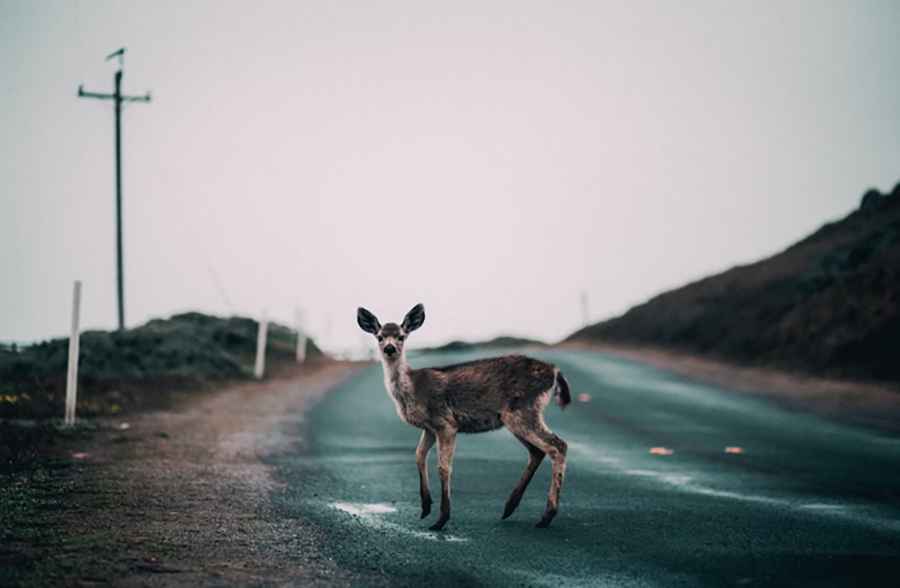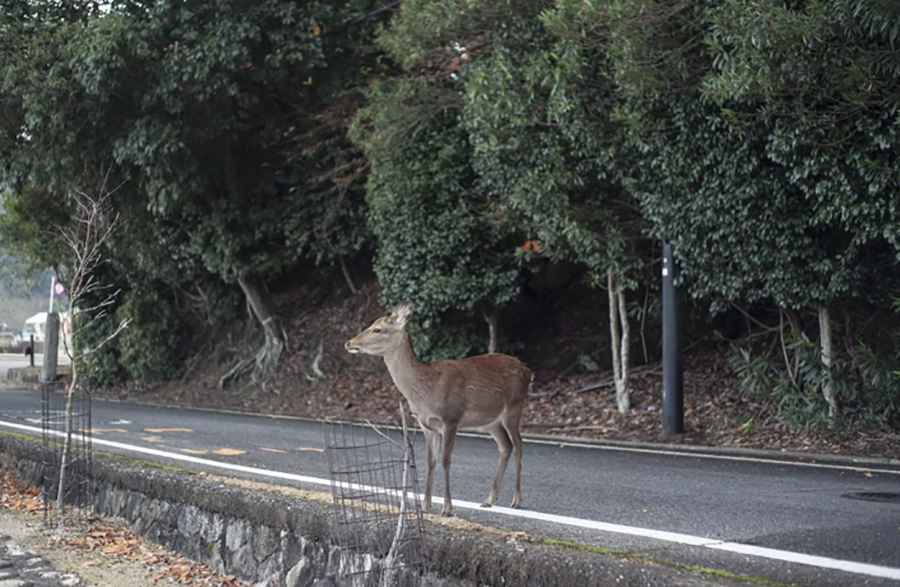Navigating Michigan's Most Dangerous Wildlife Roads: The Complete Guide
Welcome to the Great Lakes State, where the vast expanse of unspoiled nature meets modern infrastructure. Michigan's picturesque landscapes offer a unique driving experience, but the roads are not without their challenges. As you traverse this beautiful state, you'll encounter not only breathtaking scenery but also some of its wildest inhabitants. From graceful deer to mischievous raccoons, elusive cougars, and even the imposing black bears, Michigan's wildlife can pose a significant risk to drivers, making it crucial to be well-prepared and knowledgeable before hitting the road.

Understanding the Wildlife
Michigan boasts a diverse array of wildlife species, making it a haven for nature enthusiasts and animal lovers alike. Among the most commonly encountered are the white-tailed deer, known for their elegant leaps and impressive antlers. These majestic creatures are abundant throughout the state, often found in woodlands, meadows, and even suburban neighborhoods. Raccoons, with their distinctive masked faces and curious demeanor, are another frequent sight. These intelligent creatures are skilled at foraging for food and adapting to various environments, including urban areas.
Michigan's wildlife also includes the resourceful coyotes, whose haunting howls can be heard echoing through the night. Agile and elusive, coyotes thrive in both rural and urban settings, demonstrating remarkable adaptability. The red fox, with its beautiful russet coat and bushy tail, is equally at home in open fields or wooded areas, and can often be seen hunting for small prey.
Recognizing Wildlife Habitats
To minimize the risk of accidents, it's essential to know where wildlife is most likely to appear. Wooded areas, especially those close to water sources like rivers and lakes, are prime habitats for many animals, including the white-tailed deer and the elusive black bear. Rural roads flanked by forests and fields are particularly high-risk zones, as these areas provide ample cover and sustenance for wildlife. Additionally, migratory routes can bring animals, such as waterfowl, across roads near bodies of water, making these spots potential danger zones.
The Dangers of Deer Collisions
Among Michigan's wildlife, white-tailed deer present the most significant hazard to drivers. Annually, thousands of deer collisions occur, leading to injuries, fatalities, and extensive property damage. Deer are most active during dawn and dusk, which coincides with morning and evening rush hours, significantly increasing the risk of accidents during these times. Their tendency to travel in groups, especially during mating season or when seeking food, adds to the danger. The unpredictable behavior of deer is another risk factor, as they can suddenly veer off the road or into oncoming traffic.
If you are ever faced with an oncoming deer, the safest actions are to pull over and remain still until it passes. In case of a collision, it is advised to remain in your vehicle and contact the police or an experienced deer car accident lawyer to ensure you have the necessary guidance. In addition to helping you understand your legal rights and guiding you through the insurance claims process, a specialized attorney trained in this type of law can also assist in recovering any financial losses related to the incident.

Tips for Safe Driving
- Reduce Speed in High-Risk Areas: When driving through wooded or rural regions, it's essential to slow down to provide ample reaction time in case an animal darts into your path unexpectedly. Maintaining a lower speed also reduces the severity of collisions, should one occur.
- Scan the Road and Surroundings: Continuously scan the road and the shoulders, looking for any signs of wildlife. Keep in mind that some animals may blend in with their surroundings, especially during dusk or dawn, when visibility is lower. Stay alert and be prepared to react quickly.
- Use High Beams (when appropriate): On deserted dangerous roads, especially in areas with minimal street lighting, using your high beams can increase your visibility significantly. However, always remember to switch back to low beams when other vehicles are approaching to avoid blinding other drivers.
- Heed Deer Crossing Signs: These signs are strategically placed in areas with high deer activity, often near known migratory paths or frequent crossing points. Take them seriously and be prepared for potential encounters. Reduce your speed and stay vigilant when you see these signs.
- Brake, Don't Swerve: If you encounter an animal on the road, your instinct might be to swerve to avoid hitting it. However, swerving can lead to losing control or a collision with other vehicles or obstacles. Instead, brake firmly but steadily and maintain control of your vehicle.
- Watch for Groups: Deer are often found in groups, so if you spot one crossing the road, be prepared for others to follow. When you see a deer on the road, assume there may be more nearby and proceed with caution.
- Stay Cautious After Dark: Wildlife activity tends to increase after dark, especially for nocturnal animals like raccoons and foxes. Be extra vigilant during these hours, and reduce your speed if needed.
Encountering Larger Wildlife
While deer are the most common road hazard, larger animals like black bears, bobcats, and cougars require special attention. These animals are generally more reclusive, but encounters can happen, especially in more remote areas.
- Keep Your Distance: Never approach these animals, as they may feel threatened and react defensively. Maintain a safe distance, and do not attempt to get close for pictures or any other reason.
- Give Them Space: If an animal is crossing the road or lingering nearby, stop at a safe distance and wait for it to move away. Remember, these creatures are wild and unpredictable.
- Make Your Presence Known: Honk your horn or flash your headlights to alert the animal of your presence, giving it a chance to move away. Avoid abrupt or aggressive sounds or gestures that might startle the animal.
What to Do If You Hit an Animal
Despite all precautions, collisions with wildlife can still occur. If you hit an animal while driving:
- Pull Over Safely: Move your vehicle to a safe spot on the side of the road and turn on your hazard lights. Ensure you are well off the road and away from any oncoming traffic.
- Assess the Situation: Check yourself and your passengers for injuries first. If anyone is hurt, call for medical assistance immediately. Once you've ensured everyone's safety, proceed to assess the condition of your vehicle.
- Report the Incident: If the animal is large and poses a hazard to other drivers, report the accident to the local authorities. They will dispatch the necessary personnel to handle the situation.
- Don't Approach Injured Animals: Injured wildlife can be dangerous, even if they seem docile or incapacitated. Contact local animal control or wildlife rehabilitators to handle the situation. They are trained to handle wildlife safely and humanely.
Michigan's wildlife is integral to its natural charm, adding depth and wonder to the state's already stunning landscapes. However, it also presents risks for drivers, which should not be underestimated. By understanding the habits and habitats of the state's wildlife and following safe driving practices, you can navigate Michigan's roads with confidence and respect for nature. Stay vigilant, slow down in high-risk areas, and always be prepared for potential encounters. Remember, respecting wildlife and their habitats ensures a safer and more harmonious coexistence between humans and the magnificent creatures that call Michigan home. Happy and safe driving.